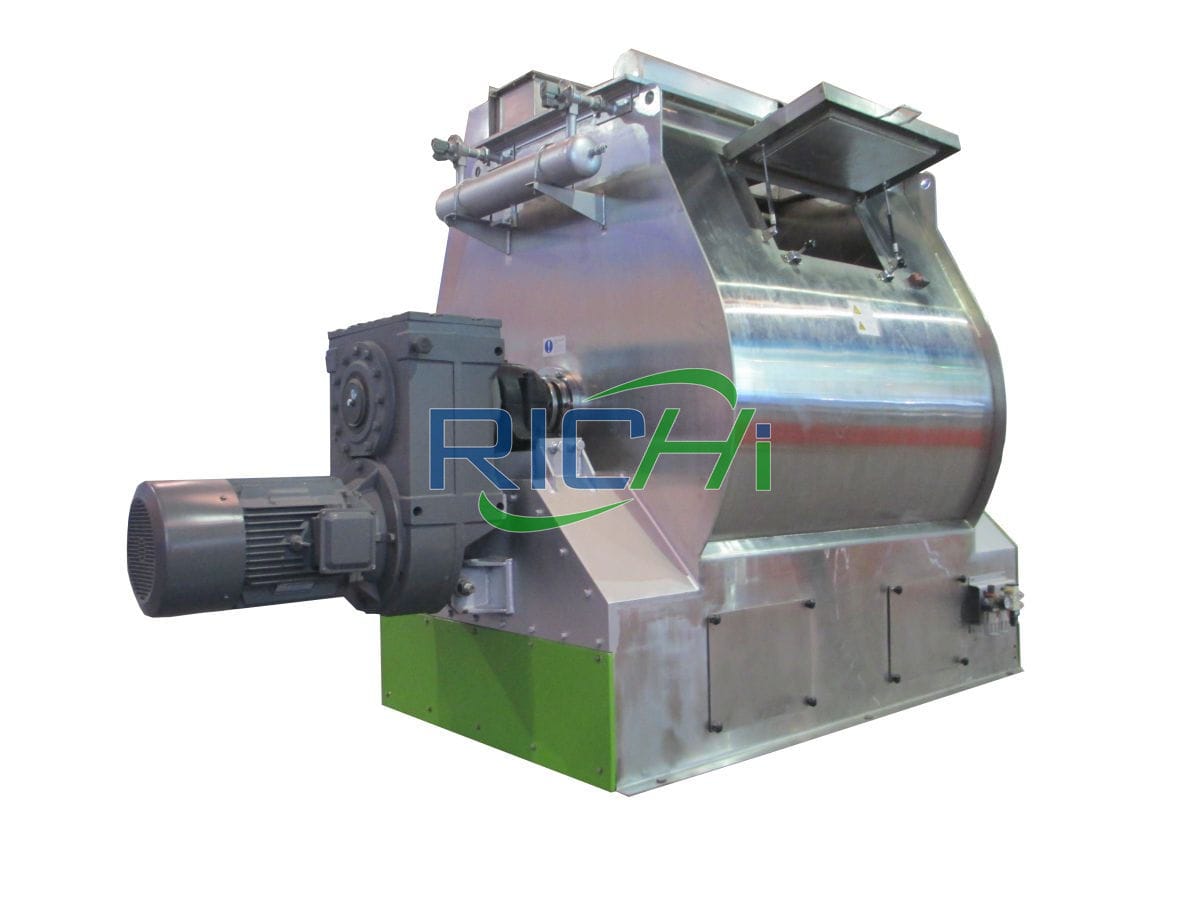
Premix Mixer Machine
Premix mixer machine is used for the incorporation of different powder and granular ingredients, with or without the addition of liquid in premix, pet food, aqua feed, and animal feed production.
Mixing is one of the most important processes in a premix feed mill factory and is also the key to ensuring the quality of the premix. It requires a short mixing cycle, high mixing quality, fast discharging, low residual rate, good sealing, and no spilled powder.
RICHI customized premix mixer solutions that fit your needs today, keeping in mind the demands of tomorrow. Our customized mixing solutions allow customers to specify what they want, the way they want it, when they need it, & on a budget they can afford.
- Capacity:250-3000 KG/P
- Power:4-55 KW
Generally speaking, the parts of the premix mixer (including the mixer buffer chamber) that are in contact with the material must be made of stainless steel, and the coefficient of variation of the mixing uniformity of the mixer is not greater than 5%.
The main purpose is to avoid equipment corrosion, keep the inner wall of the mixer clean, and avoid mixer material residues.
Type of premix mixer machine
We can provide all feed mixer machine types covering the premix industry, and all can be made of stainless steel.
- SLHJ Series Single Roller Double Paddle Mixer
- SLHSJ Series Twin-Shaft Paddle Mixer
- SLHY Series Horizontal Ribbon Mixer
- …
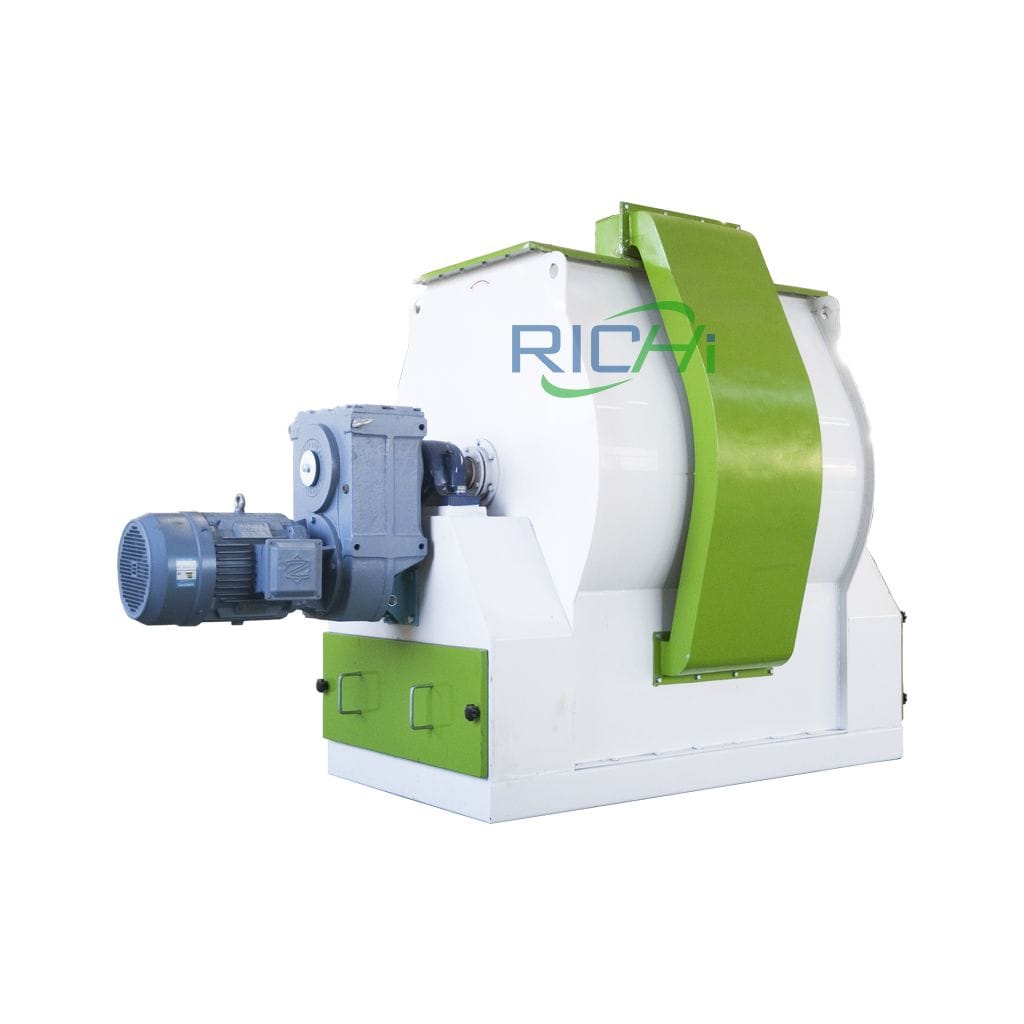
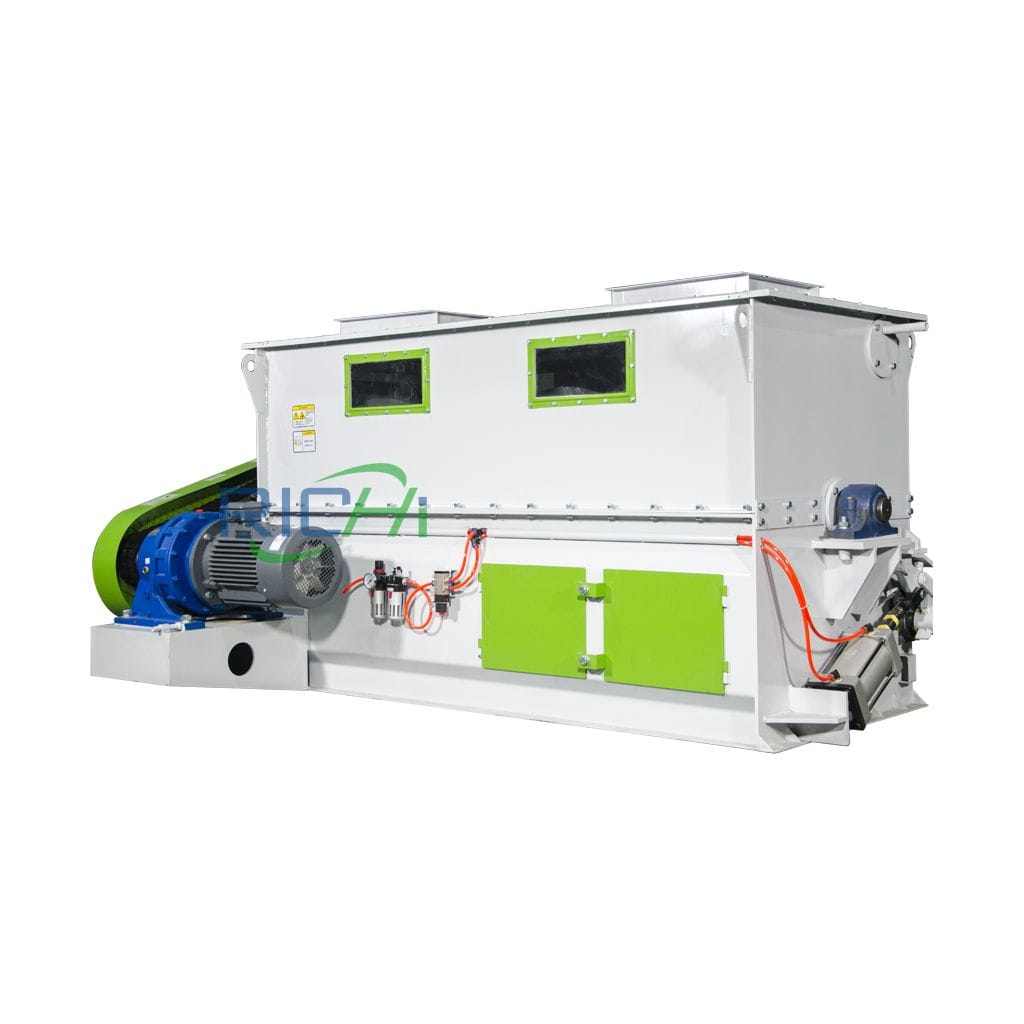
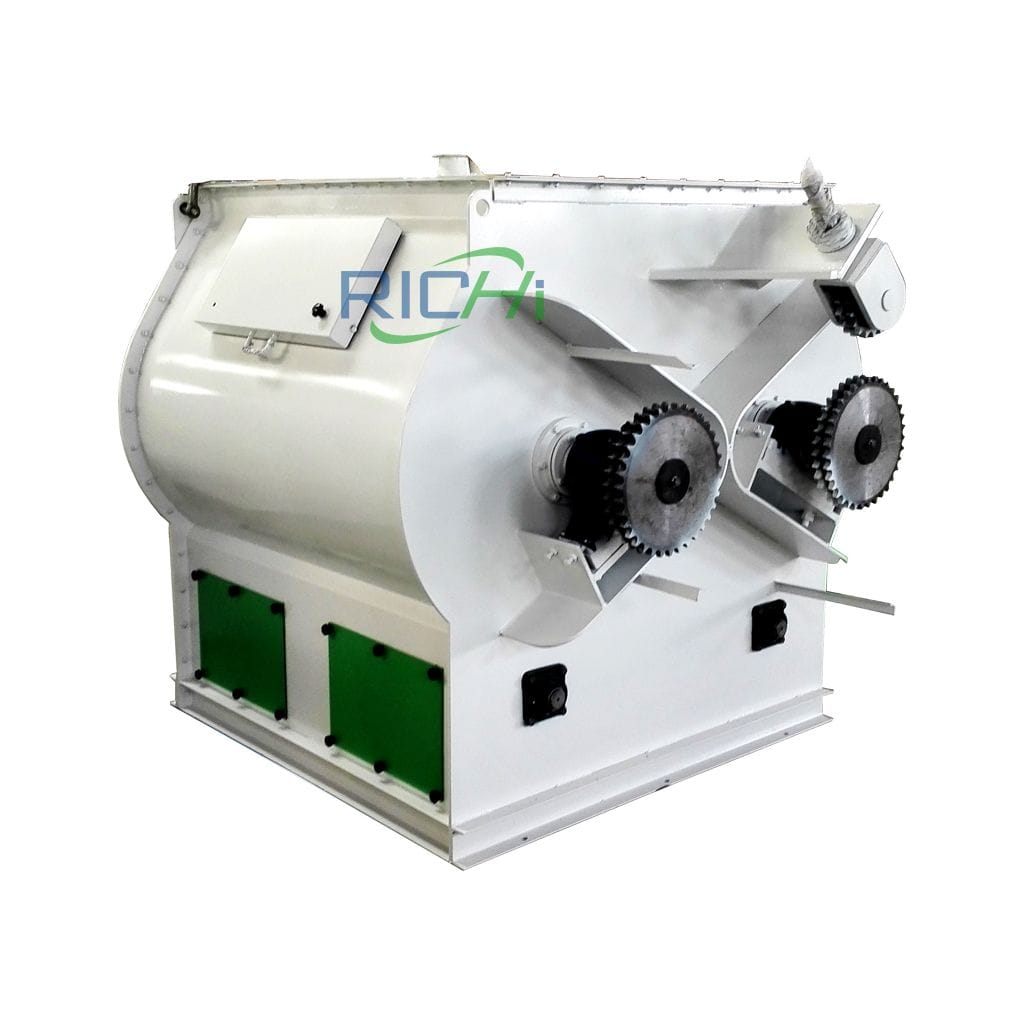
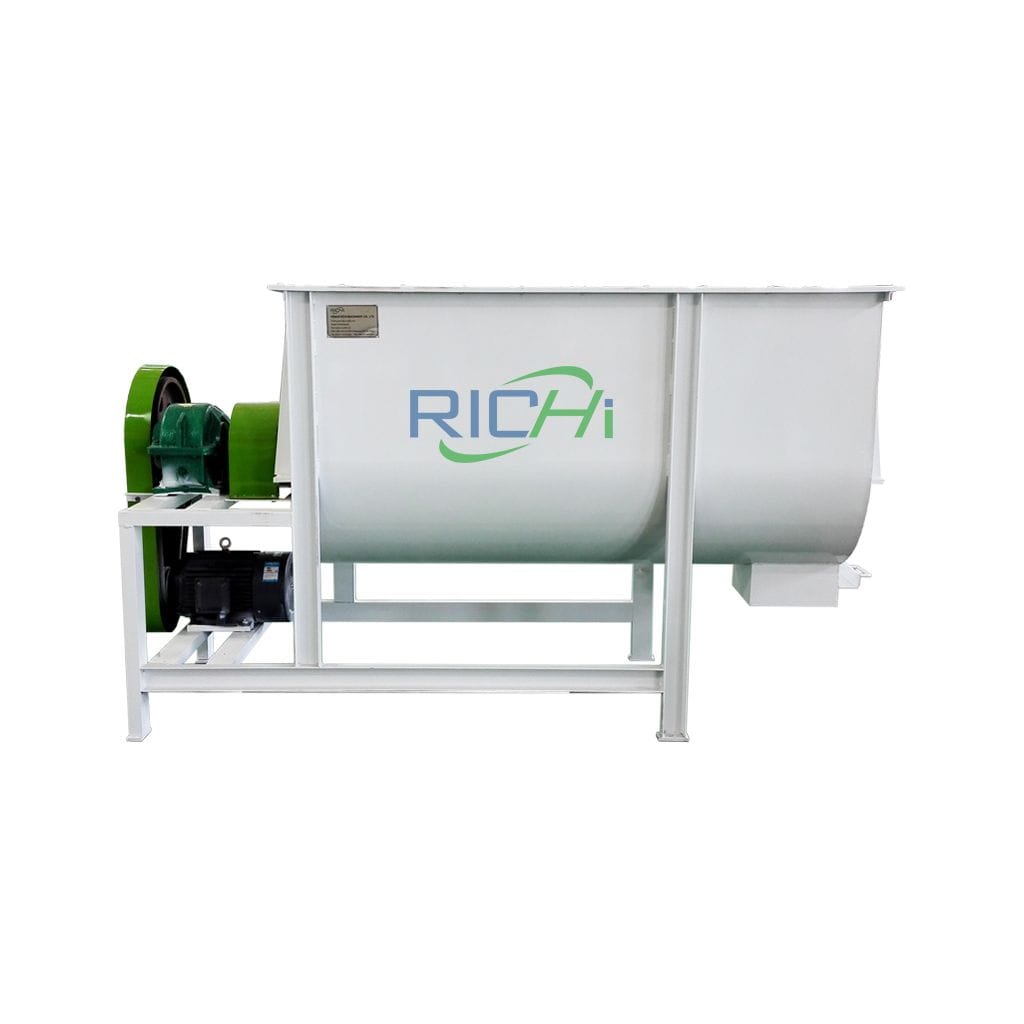
Characteristics of premix mixer machine
- It is designed in order to mix homogeneously raw materials, vitamins, minerals and compounds.
- Shaft housing has completely dust-proof design.Mixing capability is increased with the mixer is provided with pneumatically actuated butterfly valves and exit of it with the gate placed in the middle of machine.
- The premix mixer machine shaft is driven by horizontal type reducer and belt-pulley system.
- The creative design of the stainless steel mixer with gearbox ensures smooth transmission, variable speed operation, and reduces power consumption.
- The opening shaft and linkage mechanism are improved to ensure that the opening angle is larger than 90 degrees, and the door can be locked.
- The unique design of the air-return system ensures the steady flow of air during the full feeding process.
- Cv≤5%, the mixing uniformity can reach 2.3% within 30 seconds, greatly increasing the usage value of mixer.
- Many kinds of liquid and solid can be added at the same time. The spraying is accurate and the control is convenient.
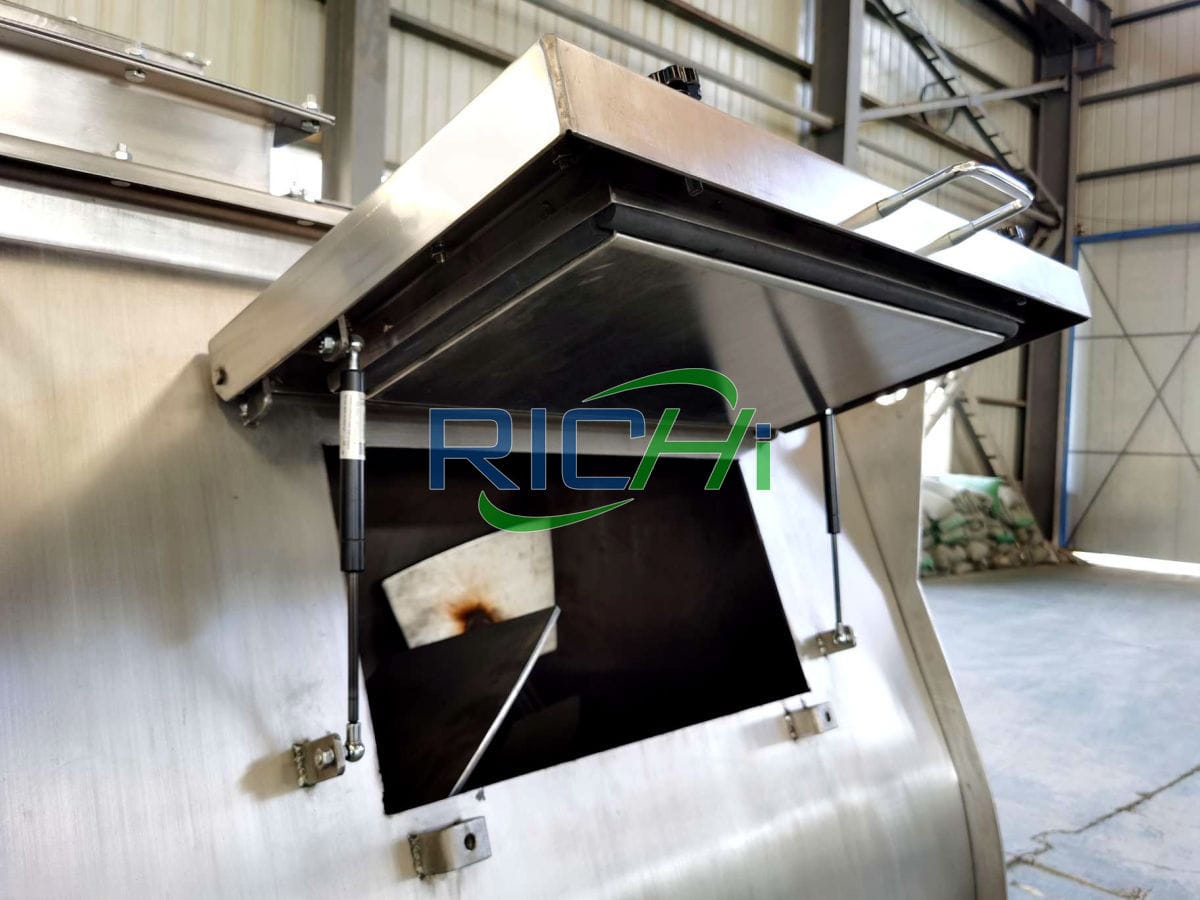
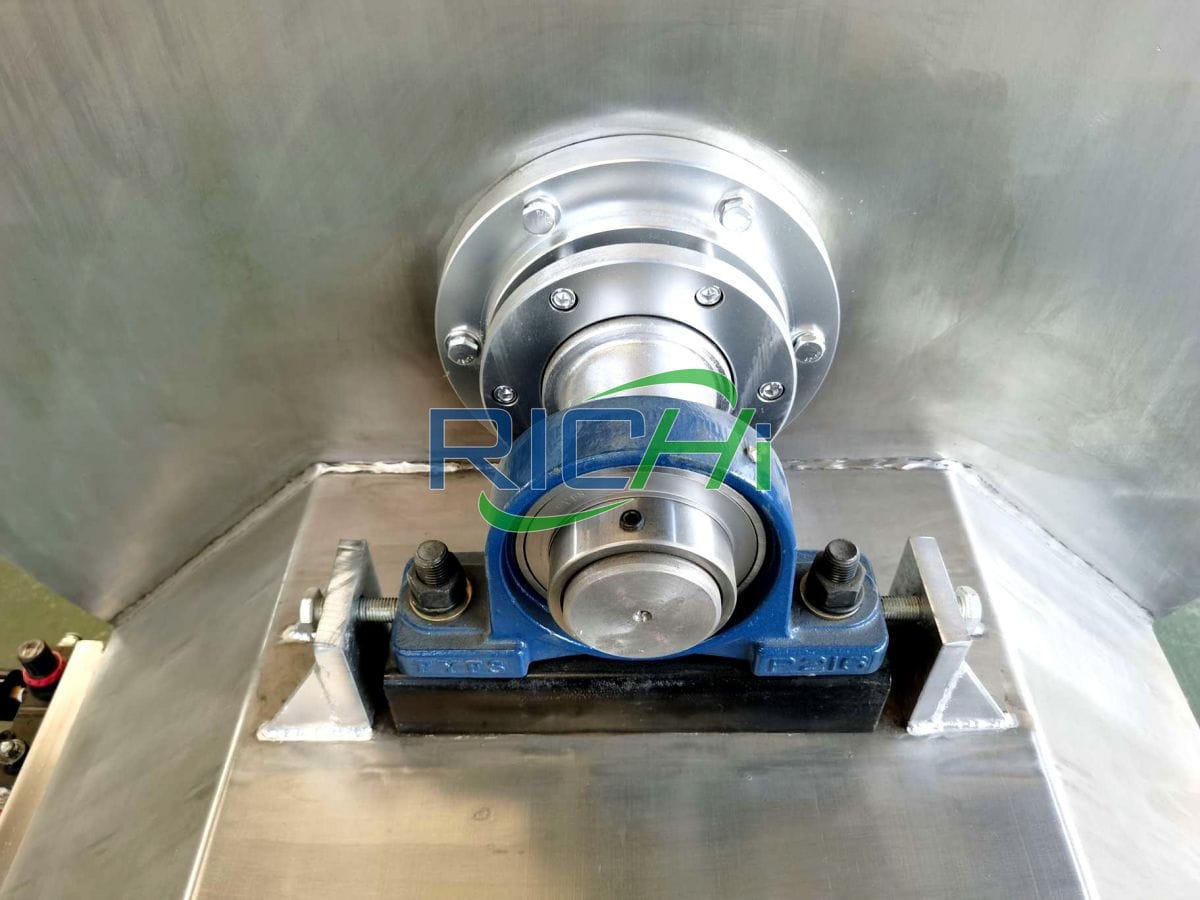
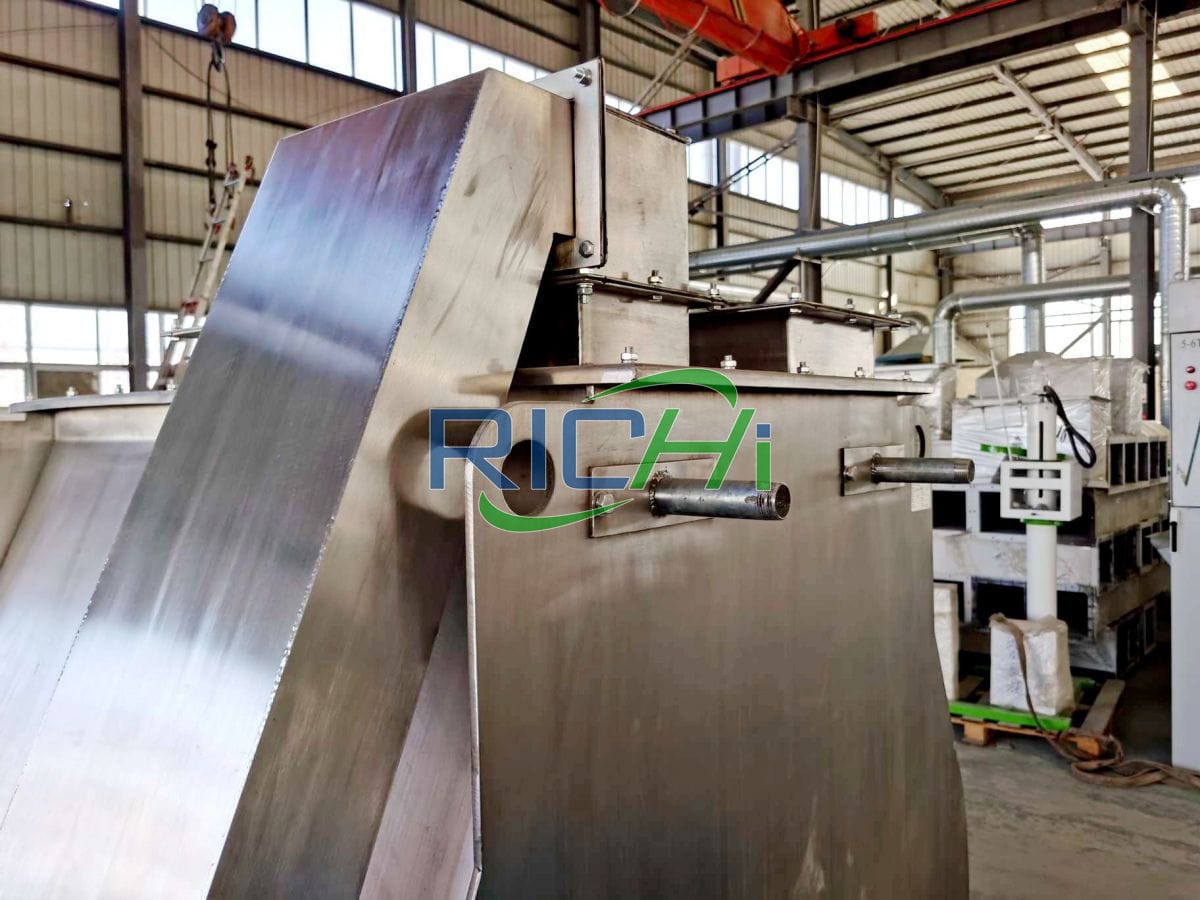
The mixing uniformity of premixes is required to be high, and usually the coefficient of variation should not be greater than 5%.
In order to reduce cross-contamination of trace components, the residual amount in the premix mixer machine is required to be as small as possible, generally no more than 100g/t.
In order to reduce dust, eliminate static electricity, improve bearing capacity and prevent grading, grease can be added during the mixing process.
Advantages of premix mixer machine
Easy maintenance
The premix mixer machine is designed for low maintenance. Its paddles can be individually adjusted and replaced; the split shaft seals can be replaced with minimal effort and the only maintenance required for the gearmotor drive is a routine oil change.
Most importantly, the bottom of the trough can be completely opened up, so the entire interior of the mixing chamber is fully accessible for cleaning.
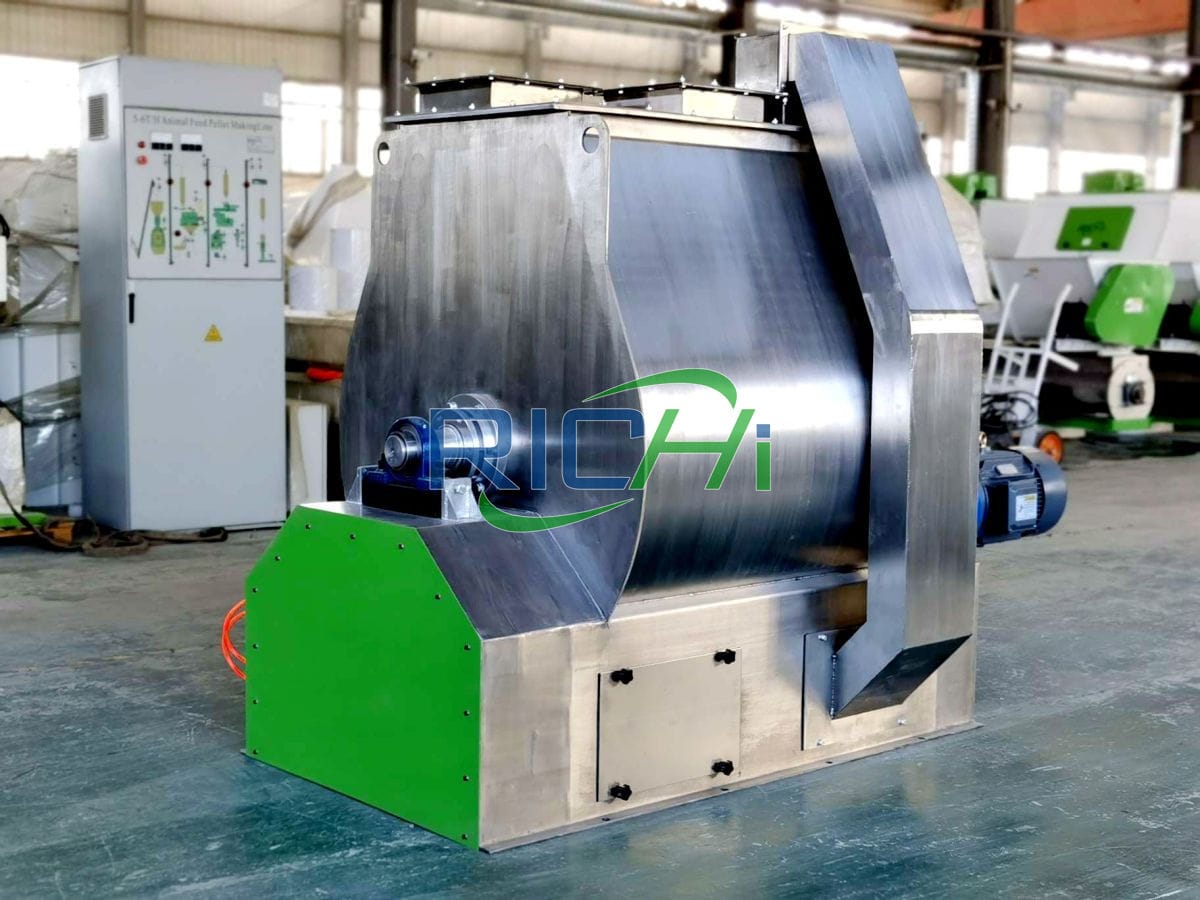
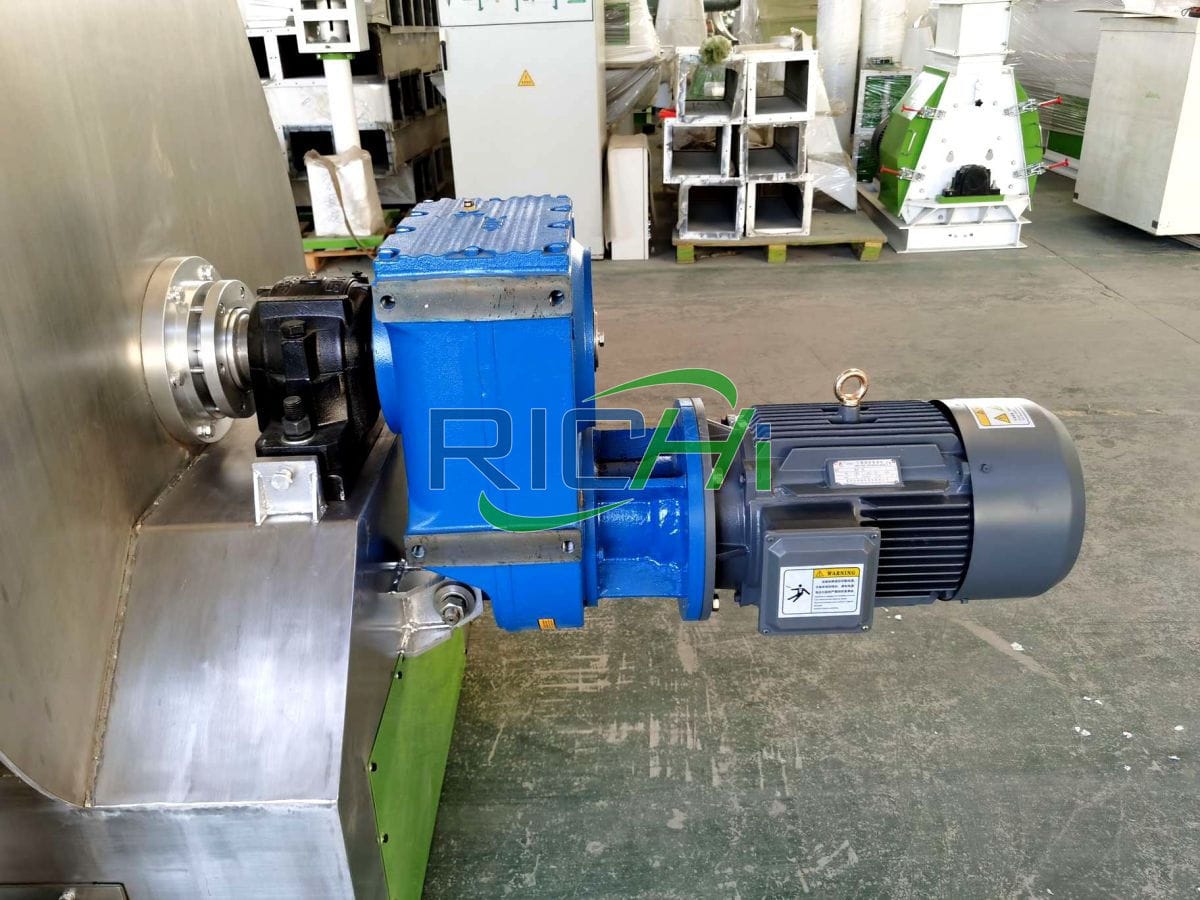
Optimal mixing quality
You can add up to 5% liquids during mixing, either with a single liquid injection or with two simultaneous liquid injections. Electrical heating pads on the spray pipe allow you to reduce a liquid’s viscosity.
For optimal product wetting without clogging or creating residues the spraying angle can be adjusted. Changing and cleaning of nozzles is also simple and easy.
Full range of automation solutions
You can purchase your RICHI stainless steel mixer as a stand-alone machine or as part of a broader solution. Richi Machinery offer a whole range of automation solutions, from individual machine control to a full automatic premix feed mill factory integration.
Technical parameters of premix mixer machine
SLHJ Series Single roller Double Paddle premix Mixer (Stainless steel)
| Model | Power(KW) | Mixed weight (KG/Batch) |
| SLHJ1A | 11 | 500 |
| SLHJ1B | 11 | 500 |
| SLHJ2A | 22 | 1000 |
| SLHJ2B | 22 | 1000 |
| SLHJ2L | 22 | 1000 |
| SLHJ3A | 30 | 1500 |
| SLHJ4L | 30 | 2000 |
| SLHJ4A | 37 | 2000 |
| SLHJ6A | 55 | 3000 |
SLHSJ Series Twin-Shaft paddle premix Mixer machine (Stainless steel)
| Model | Power(KW) | Mixed weight (KG/Batch) |
| SLHSJ0.5A | 5.5 | 250 |
| SLHSJ0.5B | 5.5 | 250 |
| SLHSJ1.0A | 7.5 | 500 |
| SLHSJ1.0B | 7.5 | 500 |
| SLHSJ2.0A | 18.5 | 1000 |
| SLHSJ4.0A | 30 | 2000 |
SLHY Series Horizontal Ribbon premix Mixer (Stainless steel)
| Model | Power(KW) | Mixed weight (KG/Batch) |
| SLHY0.5A | 4 | 250 |
| SLHY1.0A | 7.5 | 500 |
| SLHY1.0A | 7.5 | 500 |
| SLHY2.5L | 15 | 1000 |
| SLHY5.0L | 30 | 2000 |
In order to meet the mixing uniformity requirements of premixes, the secondary mixing process is often used, that is, the trace components with small addition amounts and high concentrations are diluted and mixed, and a carrier is used to carry the active ingredients and reduce separation.
Since the premix is mixed with trace additives embedded in the carrier, its mixing time is much longer than that of compound feed, generally 3 to 4 times.
premix feed mill projects
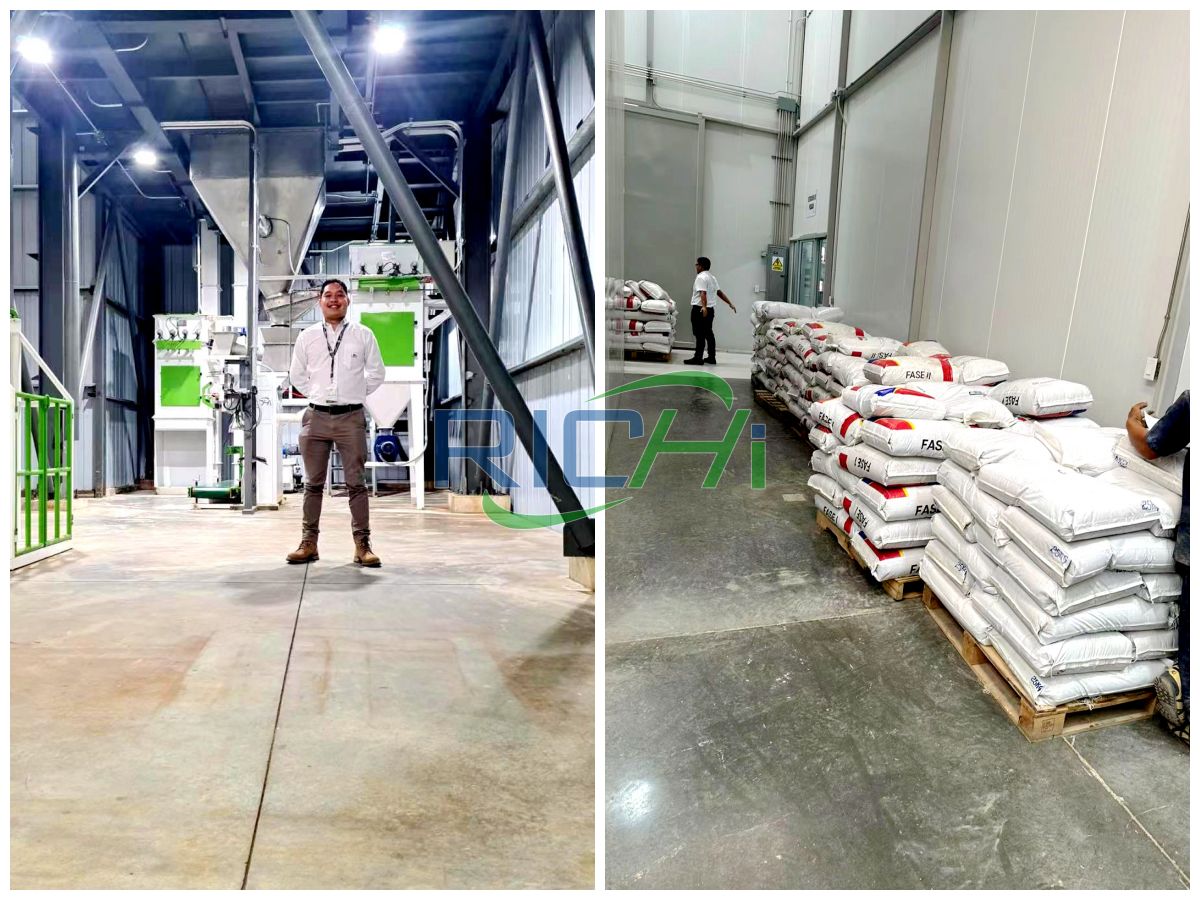
El Salvador
premix mixer machine for sale El Salvador
- Application: 5 T/H Animal premix feed mill
- Project Time: 2022. 09.13
- Premix feed mill cost: 480,000 USD
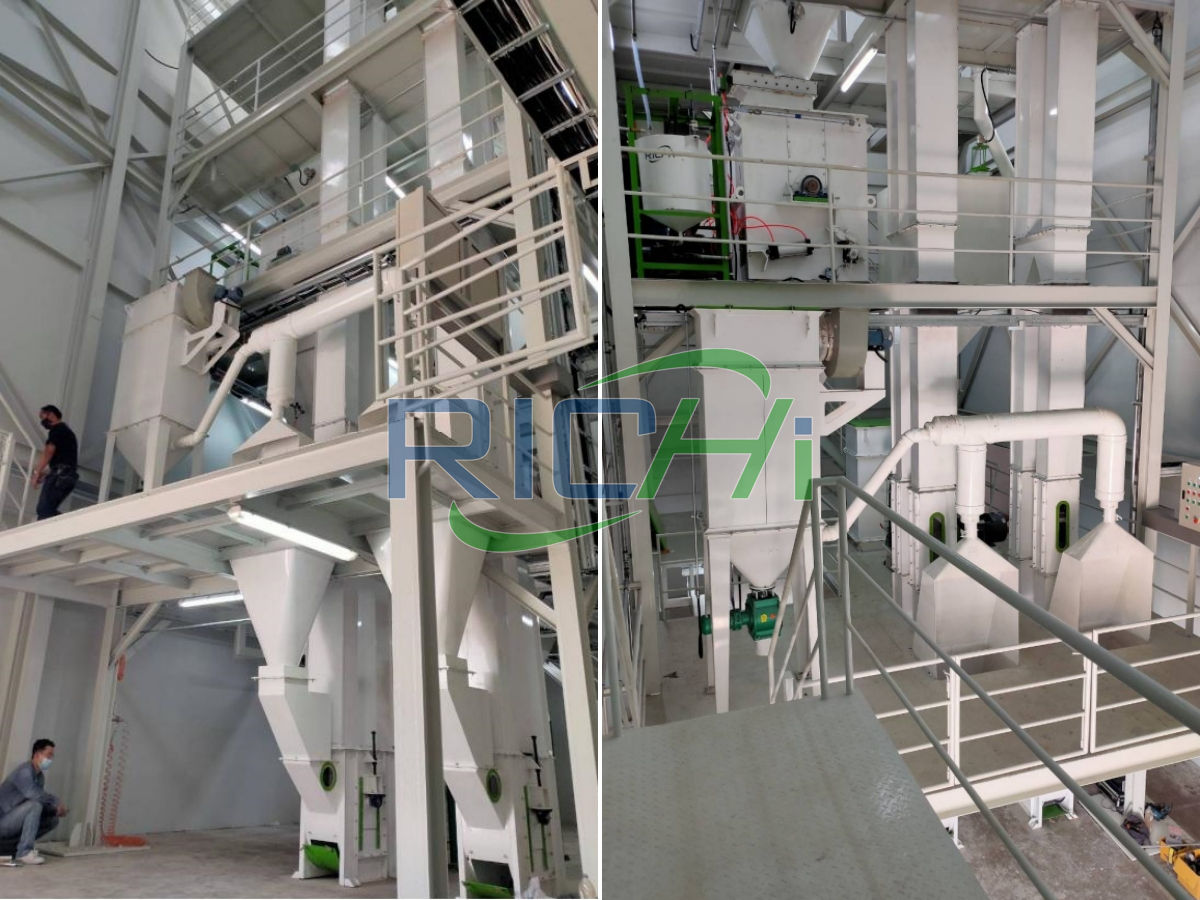
Thailand
premix mixer machine for sale Thailand
- Application: 10 t/h poultry premix feed mill
- Project Time: 2021. 07. 22
- Premix feed mill cost: 120,000 USD
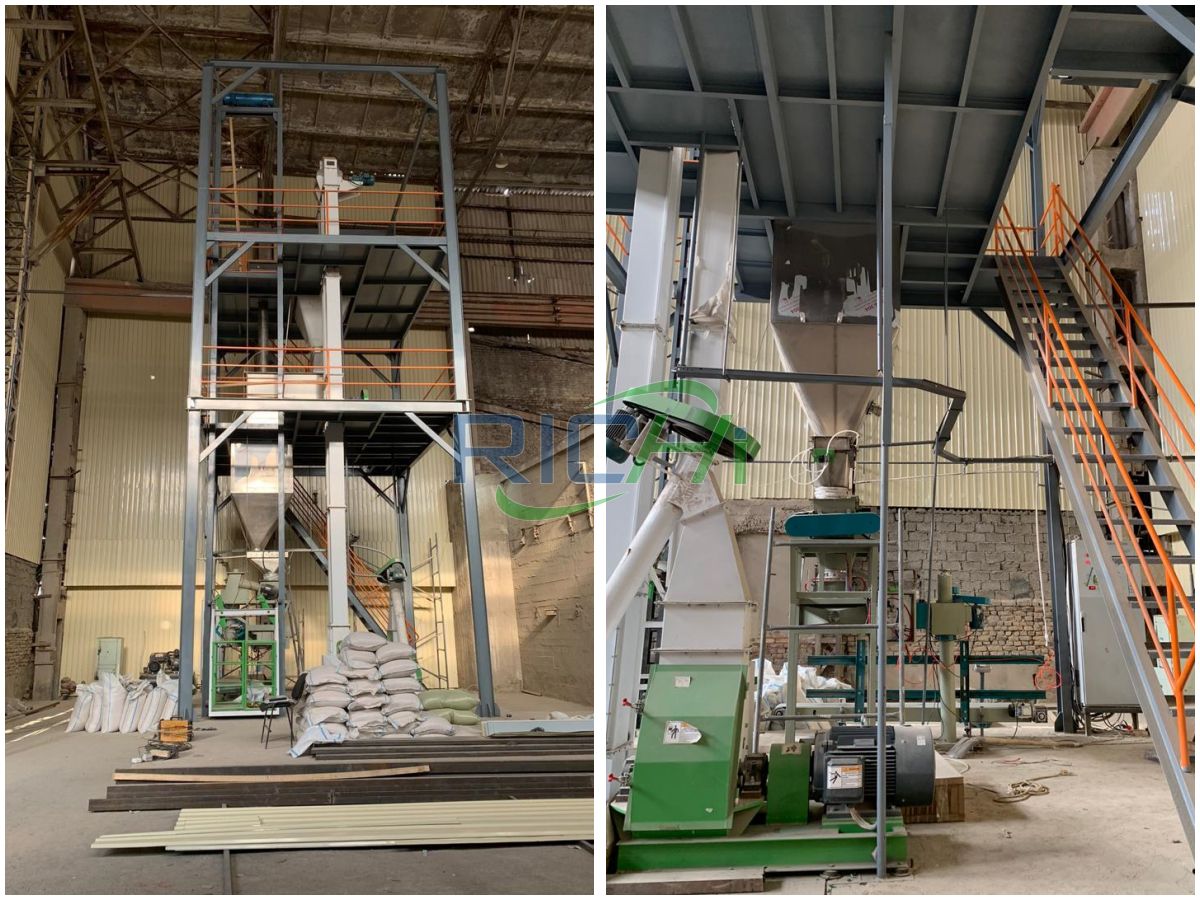
Uzbekistan
premix mixer machine for sale Uzbekistan
- Application: 5 T/H Premix Feed Mill
- Project Time: 2020. 04. 24
- Premix feed mill cost: 240,000 USD
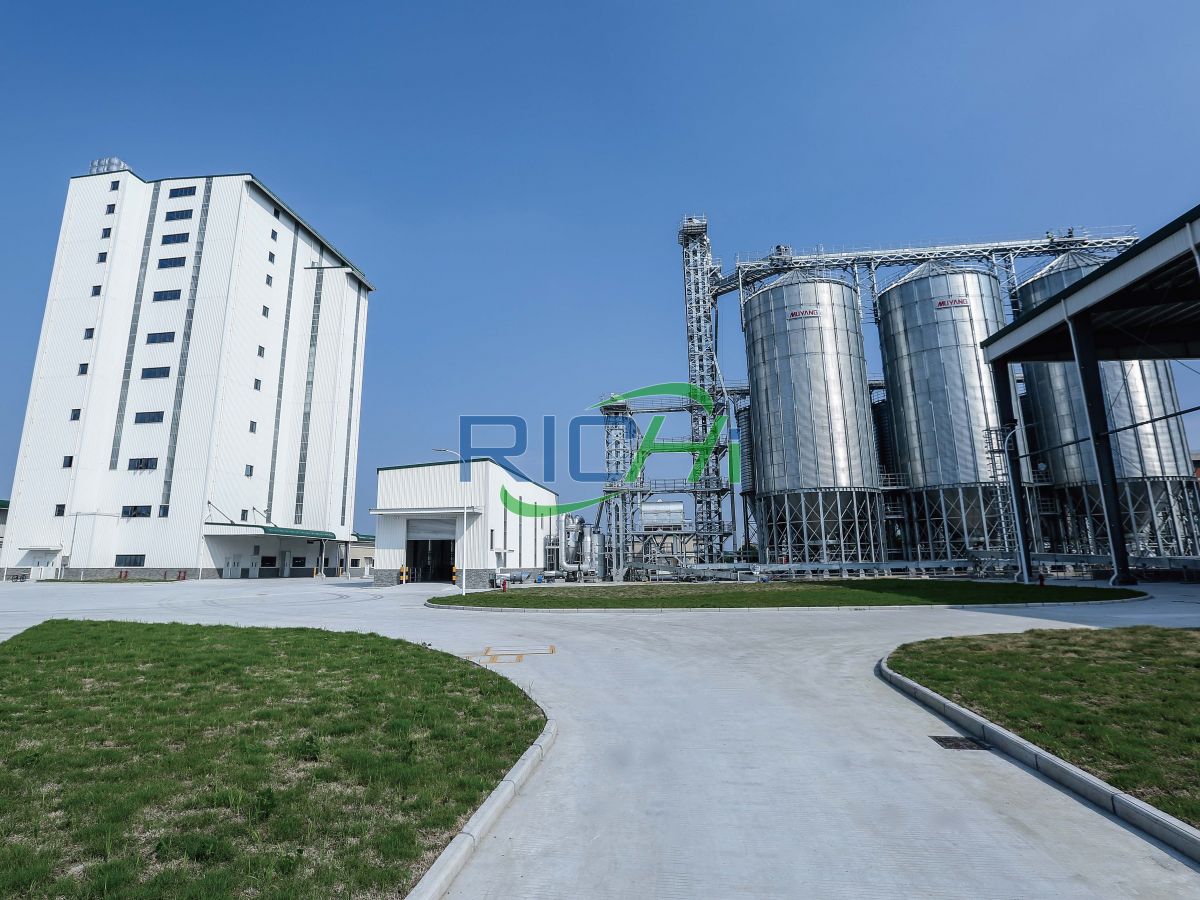
China
premix mixer machine for sale China
- Application: 20 T/H Premix Feed Manufacturing Plant
- Project Time: 2018. 03. 14
- Premix feed plant cost: 1,260,000 USD
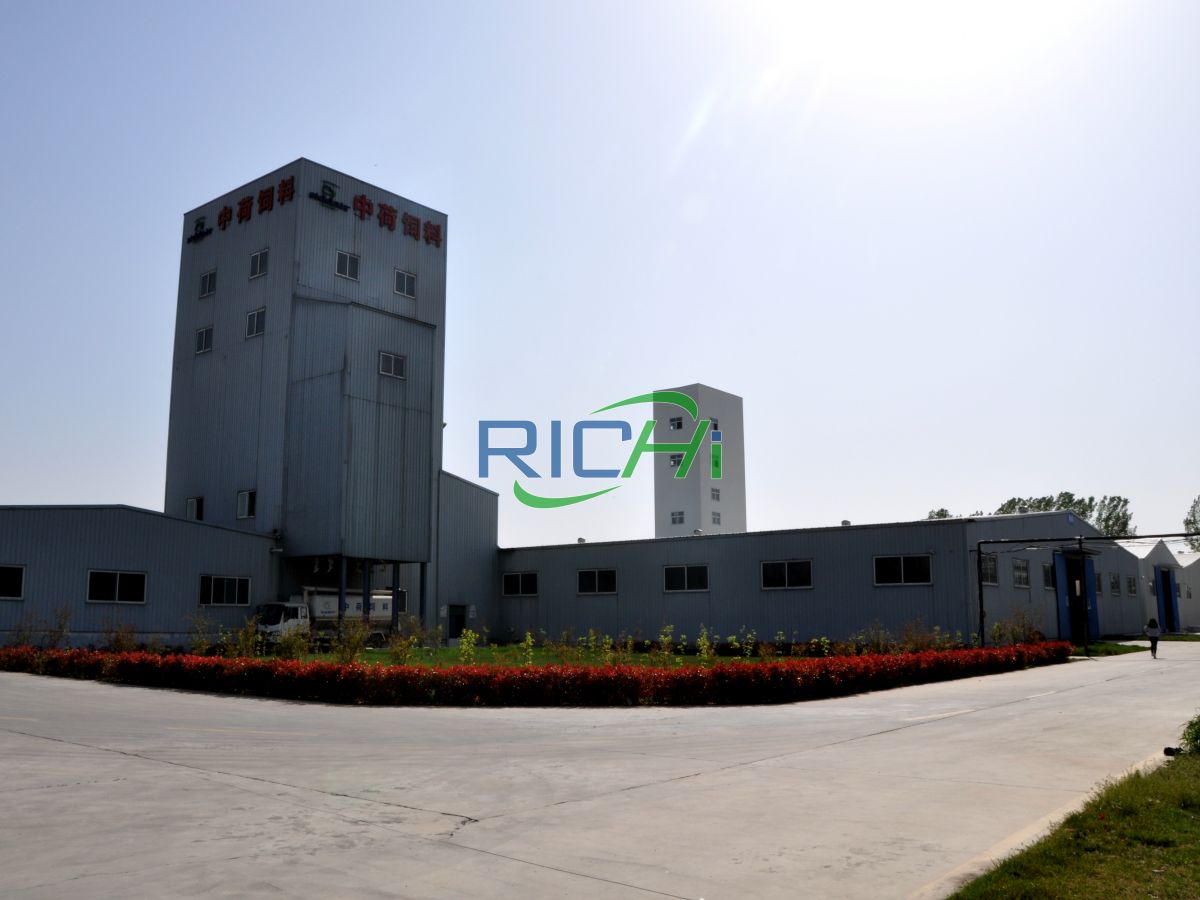
China
premix mixer machine for sale China
- Application: 10 T/H Premix Feed Mill Factory
- Project Time: 2015. 08. 18
- Premix feed plant cost: 740,000 USD
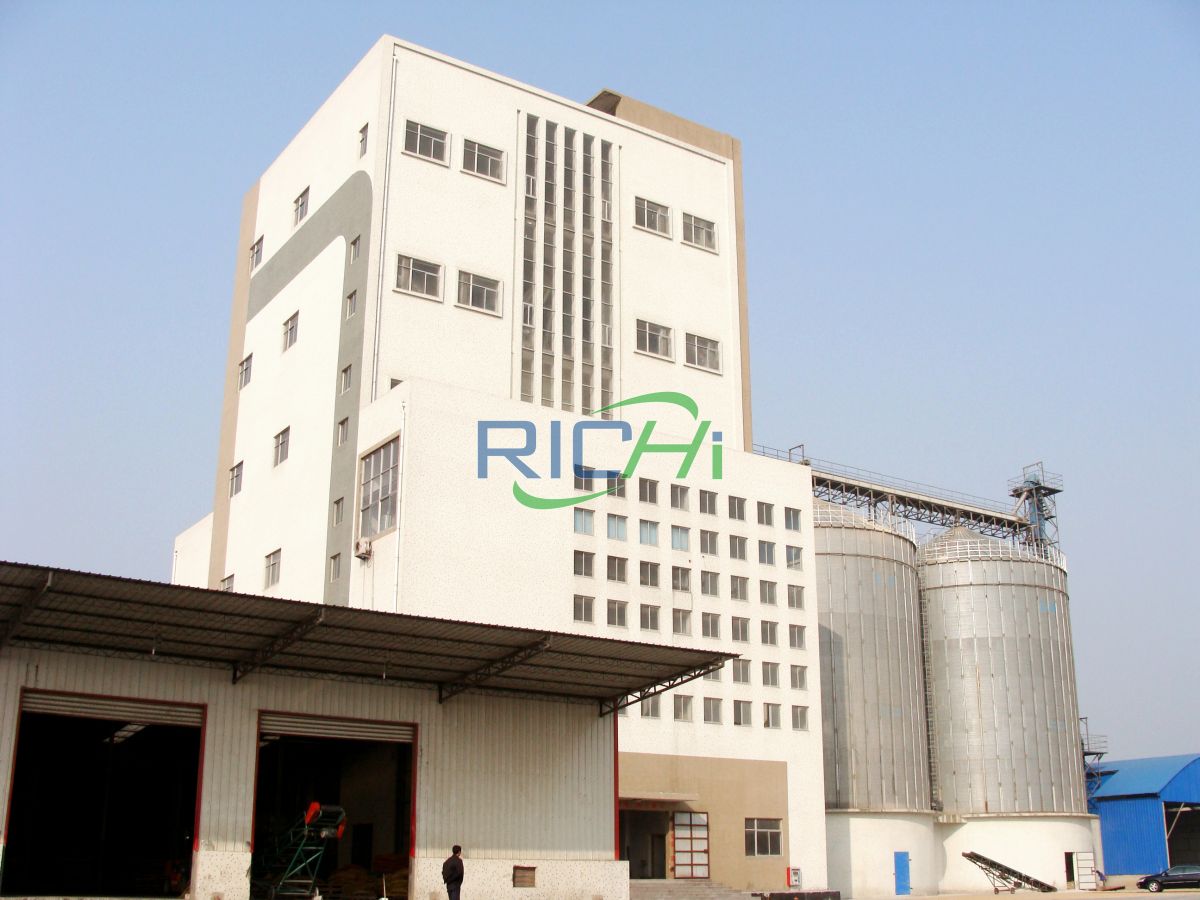
China
premix mixer machine for sale China
- Application: 15 T/H Premix Feed Mill Plant
- Project Time: 2017. 04. 19
- Premix feed plant cost: 980,000 USD
Requirements for premix mixer machine
Made of stainless steel
Regardless of the production process, starting from the premix mixer machine (including the small material adding hopper) to the packaging scale, all equipment and parts of the hopper that are in contact with the material must be made of stainless steel.
Effective volume
There are no clear written requirements, but according to the requirements of experts during on-site audits, the effective volume of the main premix mixer in the premix workshop is at least 1 cubic meter.
It is recommended to use a double-shaft blade high-efficiency mixer and a single-shaft double-blade premix mixer machine. Although the blade-belt spiral mixer is cheap, it takes a long time to mix, the mixing uniformity is low, and the discharging is incomplete and the residue is large, so it is gradually being abandoned by premix companies.
Selection of premix mixing machine
The premix mixer machine is the core equipment for premix production. Different types of mixers should be selected according to different raw materials and processes.
The three major factors of mixing uniformity, mixing dead ends and residues need to be given priority, followed by mixing time, price, installation conditions, etc.
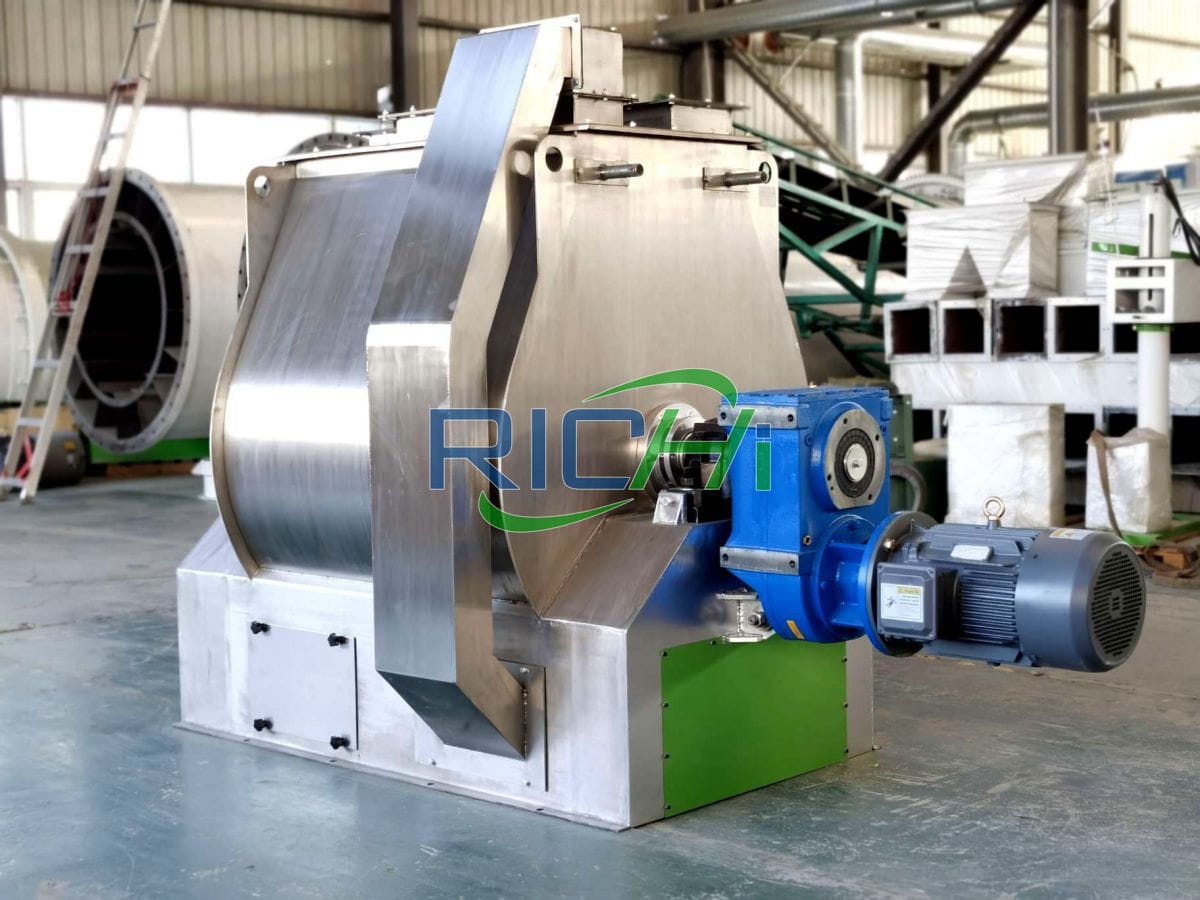
Premix production lines generally use stainless steel double-shaft blade high-efficiency mixers and single-shaft double-blade mixers.
These two feed mixers have high mixing uniformity, and their production variation coefficient is less than 5%, and can even reach 2%~3 %. The bottom of the premix mixer machine has a full-length door, leaving no residue.
It is equipped with a blowing device and an observation door to facilitate cleaning of the mixer. Special shaft end seal ensures no material leakage.
The following issues also need to be considered when selecting a mixer:
- Is it easy to add materials and suitable for adding liquid materials;
- Can the mixing efficiency be improved and static charges eliminated; whether it is easy to clean, etc.
Any lack of any of the above characteristics will cause major problems.
Although mixers vary in shape, design, and process parameters, there are 2 main considerations when selecting a mixer: mixing time and surface area of internal parts.
The mixing time should be as short as possible to avoid static caking, the number of internal parts should be as few as possible, and the minimum surface area should be ensured to reduce caving and facilitate cleaning.
Manufacturing premixes is different from manufacturing compound feeds. Therefore, in order to ensure mixing quality and reduce storage and transportation, the same set of equipment cannot be used.
How to ensure the mixing quality of the premix mixer machine?
The mixing process is actually a process in which mixing and separation effects such as convection, diffusion, and shear coexist at the same time. All factors that affect these effects will affect the mixing quality of the mixer. The main factors are as follows:
Choose the appropriate model
Different models of premix mixers have different main mixing methods and mixing intensity.
For example, a horizontal spiral ribbon mixer based on convection is superior to a vertical spiral mixer based on diffusion in terms of mixing time, mixing quality, and residue. Therefore, choosing the right premix mixer machine is extremely important.
Be familiar with the physical properties of the mixed components
Physical properties mainly refer to the density, particle size, particle surface roughness, moisture, scattering, agglomeration, etc. of the material.
The smaller the difference in these physical properties, the better the mixing effect, and the less likely it is to separate again after mixing.
In addition, the smaller the proportion of a certain component in the mixture, that is, the greater the dilution ratio, the less likely it is to mix. In order to reduce re-separation after mixing, viscous liquid components, such as molasses, can be added when other components are almost completely mixed to reduce their scattering and thus reduce separation.
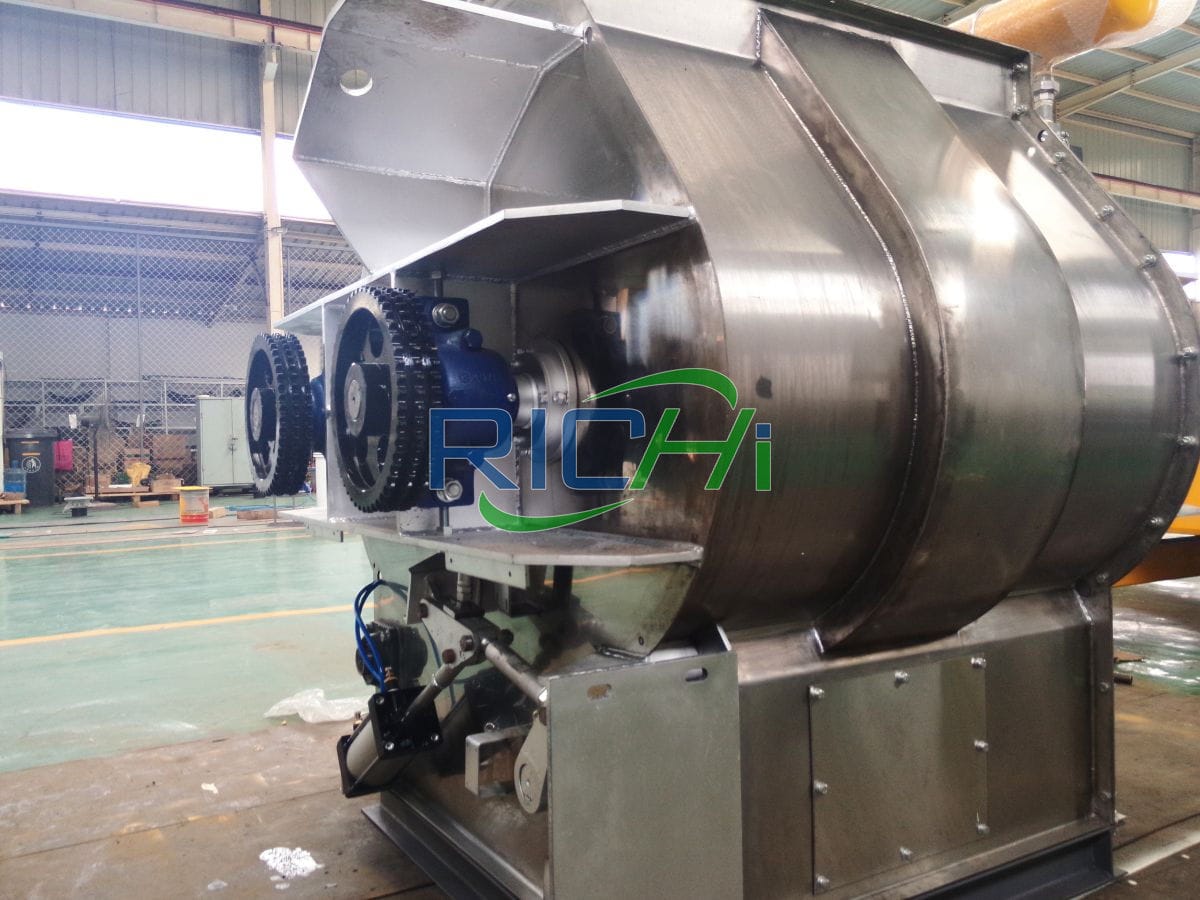
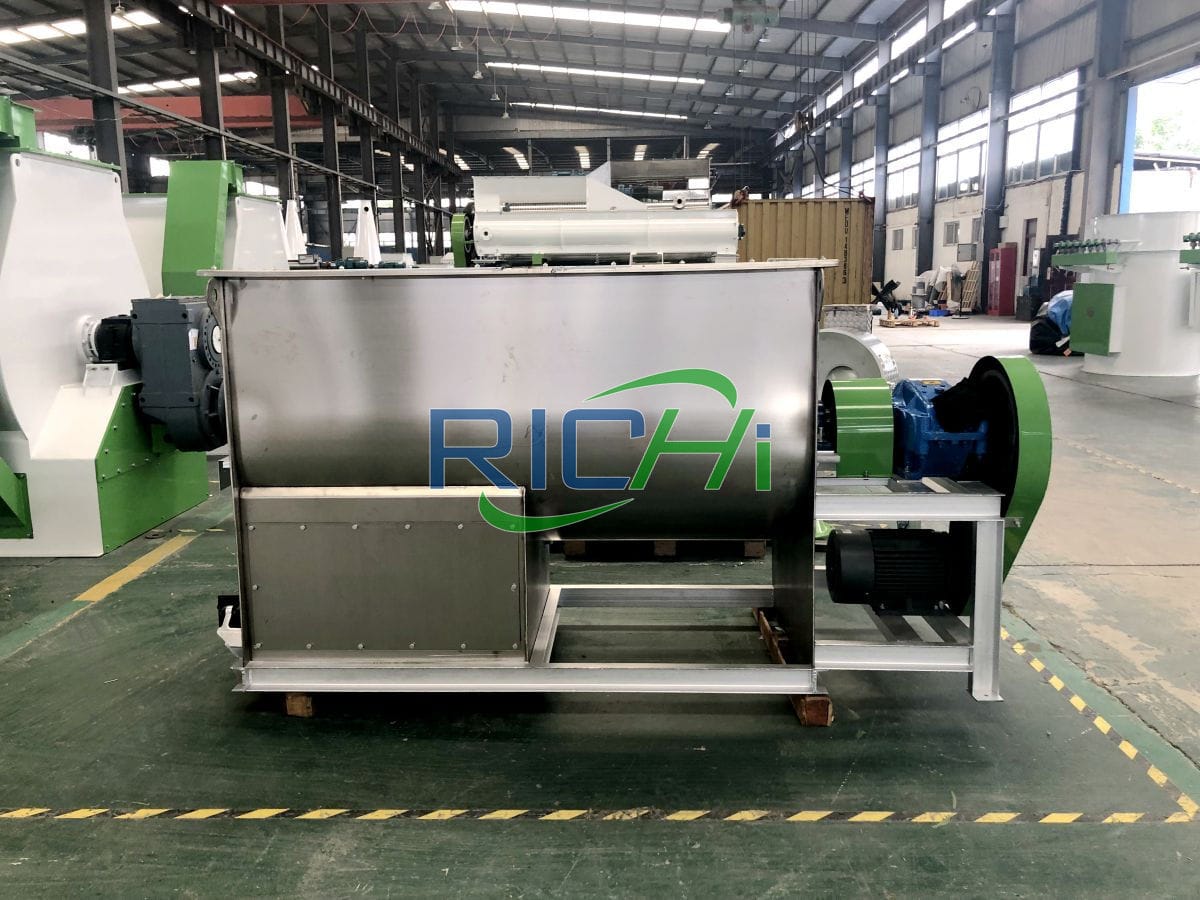
Ensure correct operation
Mixing time, feeding order of each component, etc. will affect the mixing quality, so the mixing time must be ensured and the materials should be added in a reasonable order.
Prevent static electricity
Vitamin B2, folic acid, minerals and other materials will be adsorbed on the machine wall due to electrostatic effect. The stainless steel mixer must be properly grounded and antistatic agent added to prevent the effects of static electricity. (Find RICHI on YouTube)
Reasonable use of premix mixer machine
01 Suitable loading
Regardless of the type of premix mixer machine, appropriate loading is a prerequisite for the mixer to work properly and achieve the desired results.
- If you charge too much material: on the one hand, it will overload the mixer, and more importantly, too much material will affect the mixing process of the materials in the machine, resulting in a decrease in mixing quality;
- Loading too little: The efficiency of the stainless mixer cannot be fully utilized, which will also affect the mixing quality.
Therefore, no matter what kind of premix mixer is used, the filling degree of the materials should be effectively controlled, so as to ensure the normal operation of the mixer and ensure that the mixed feed meets the quality requirements.
The filling coefficient of batch horizontal ribbon mixers is generally 0.6 to 0.9, and the highest material level cannot exceed the top plane of the rotor; the filling coefficient of twin-shaft paddle mixers is generally controlled to be 0.6 to 0.85.
02 Correct mixing time
For batch mixers, the determination of mixing time is very important for mixing quality.
- lf the mixing time is too short, the materials will be discharged without being fully mixed in the mixer, and the mixing quality cannot be guaranteed;
- lf the mixing time is too long, the materials will be over-mixed in the mixer and cause separation, which will also affect the quality and increase energy consumption.
The determination of the mixing time depends on the mixing speed of the mixer, which is mainly determined by the model of the premix mixer machine.
- For example, a horizontal ribbon mixer usually takes 3 to 5 minutes per batch. The length depends on the type and properties of the raw materials, such as moisture content, particle size, fat content, etc.;
- The mixing time of the twin-shaft paddle mixer is less than 2 minutes per batch;
- For drum mixers, longer mixing cycles are required due to their slower mixing action.
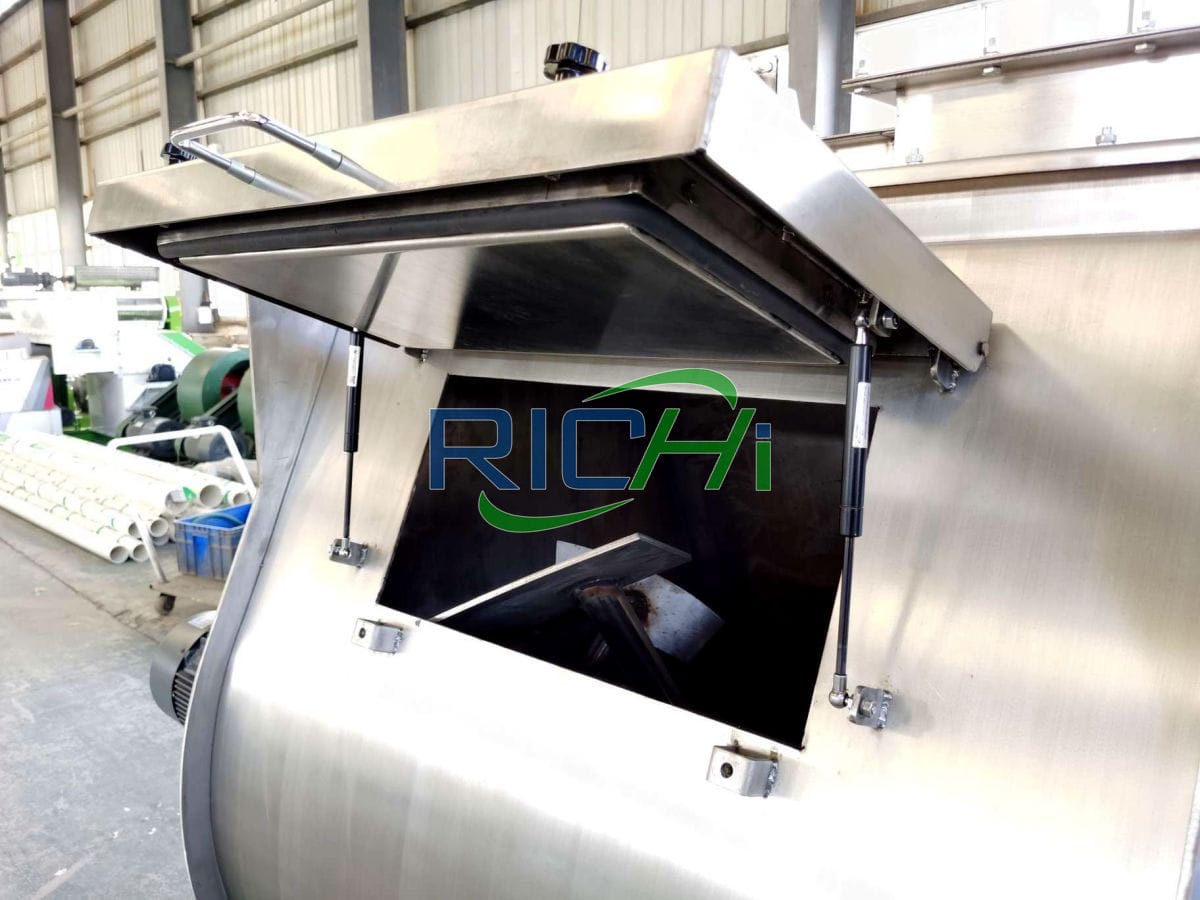
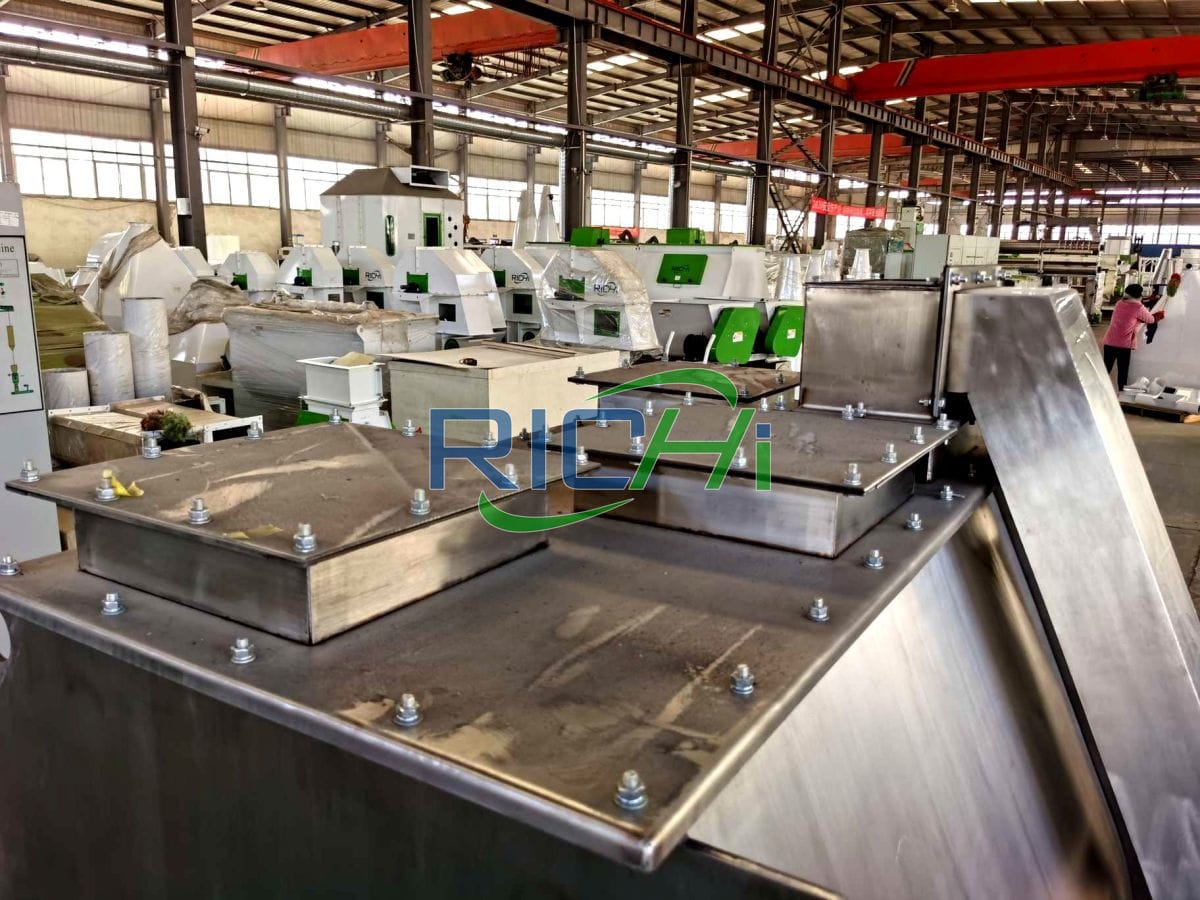
03 Reasonable operation sequence
The order in which materials are fed into the mixer is closely related to the quality of the final product. If the sequence is incorrect, problems such as oil globules, chemical interactions, and particle classification can occur.
- During the pre-mixing process, it is best to add the carrier first, and then add the binder, so that the binder is evenly distributed on the carrier and increases the carrier’s carrying capacity;
- During the premixing process, diluent can be added at any time;
- After pretreatment, micronutrients should be added to reduce the formation of oil balls and dust. According to the particularity of processing premixed feed, this feeding sequence can be adjusted appropriately;
- The mixing time can be adjusted appropriately according to the type of mixer (such as 2~15 min). As premix mixer manufacturer, we can recommend the mixing time and/or guide the confirmation test of the mixing time of the premix mixer machine.
04 Try to avoid separation
Any powder that flows well has a tendency to separate. There are 3 reasons for separation:
- When materials fall onto a pile, larger particles fall to the bottom of the pile due to greater inertia, and small particles with smaller inertia may become embedded in cracks on the pile;
- When the material is vibrated, smaller particles tend to move to the bottom, while larger particles tend to move to the top;
- When the mixture is blown or fluidized, separation occurs accordingly as the particle size and density differ.
To avoid separation, take the following methods:
- Try to keep the particle sizes of the various components of the mixture close; or add liquid to avoid separation.
- Master the mixing time and do not overmix. It is generally believed that materials should be discharged before nearly uniform mixing, and mixing should be completed during transportation or transfer.
- Reduce the loading and unloading work after mixing to a minimum. The less material falls, rolls or slides, the better. The mixed silo should be as small as possible.
The best transportation equipment after mixing is a belt conveyor. Screw conveyors, bucket elevators and pneumatic conveying devices should be used as little as possible. - Ground the premix mixer machine and add antistatic agents to the feed to reduce mixture separation due to static electricity adsorption.
The mixing process in premix production is actually a very complex process. In actual production, sufficient attention must be paid to it. The quality control of the production process involves many aspects, from raw material selection, premix mixer selection, operation, The optimal process parameters of the mixing process, the sequence of the mixing process and personnel operations, etc.
There are many factors that affect the final quality of premix products. Only by comprehensively considering all aspects that affect product quality can we ensure the production of premix products that meet product quality standards and meet the needs of animal growth.
FAQs of premix mixer machine

What issues should we pay attention to when using a premix mixer machine?
Pay attention to the following points when using a premix mixer:
- Changes in the formula will cause the filling factor to increase or decrease. The filling factor should be in line with the normal use range of the equipment. For materials with heavy specific gravity, the carrying capacity of the motor should be considered and do not overload.
- The scientific feeding sequence can not only shorten the mixing time, but also is an important link to ensure the mixing uniformity.
Generally, 70% to 80% of the carrier or diluent is added to the mixer first, then all trace components are added, and finally add remaining portion of vehicle or diluent.
If grease is added, in order to prevent the grease from contacting the trace components first and avoid causing agglomeration of the trace components and affecting the quality of the premix, the mixing sequence is to mix the carrier or diluent with the grease for a period of time and then add the trace components. - A reasonable mixing time should be determined through experiments to maximize the hourly output of the premix mixer machine while ensuring that the mixing uniformity of the product meets the quality standards.
For this reason, the optimal mixing time must be tested as the formula changes to ensure that the mixing uniformity of the premix reaches the specified requirements.
Recommended mixing time: 10 to 15 minutes for a horizontal twin-screw mixer and 5 to 8 minutes for a twin-shaft paddle mixer.

How often does the premix mixer machine need to be inspected and repaired?
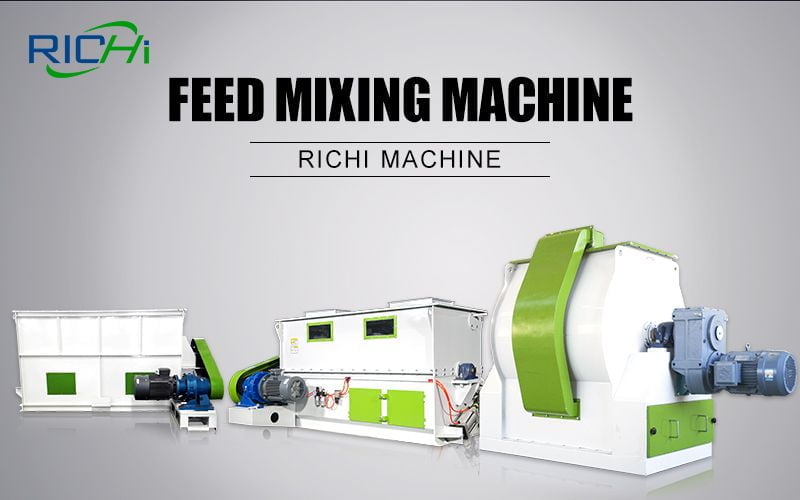
As for the horizontal ribbon mixer, after a period of use, the wear, damage and deformation of the ribbon, and the increase in the gap between the ribbon and the mixer shell will greatly affect the mixing uniformity.
In addition, material leakage from the discharge door is also one of the important factors affecting the performance of the premix feed mixer.
In order to ensure the quality of feed products, the operating performance of the mixer must be regularly tested and repaired in a timely manner, once every six months.

How to clean the premix mixer machine?
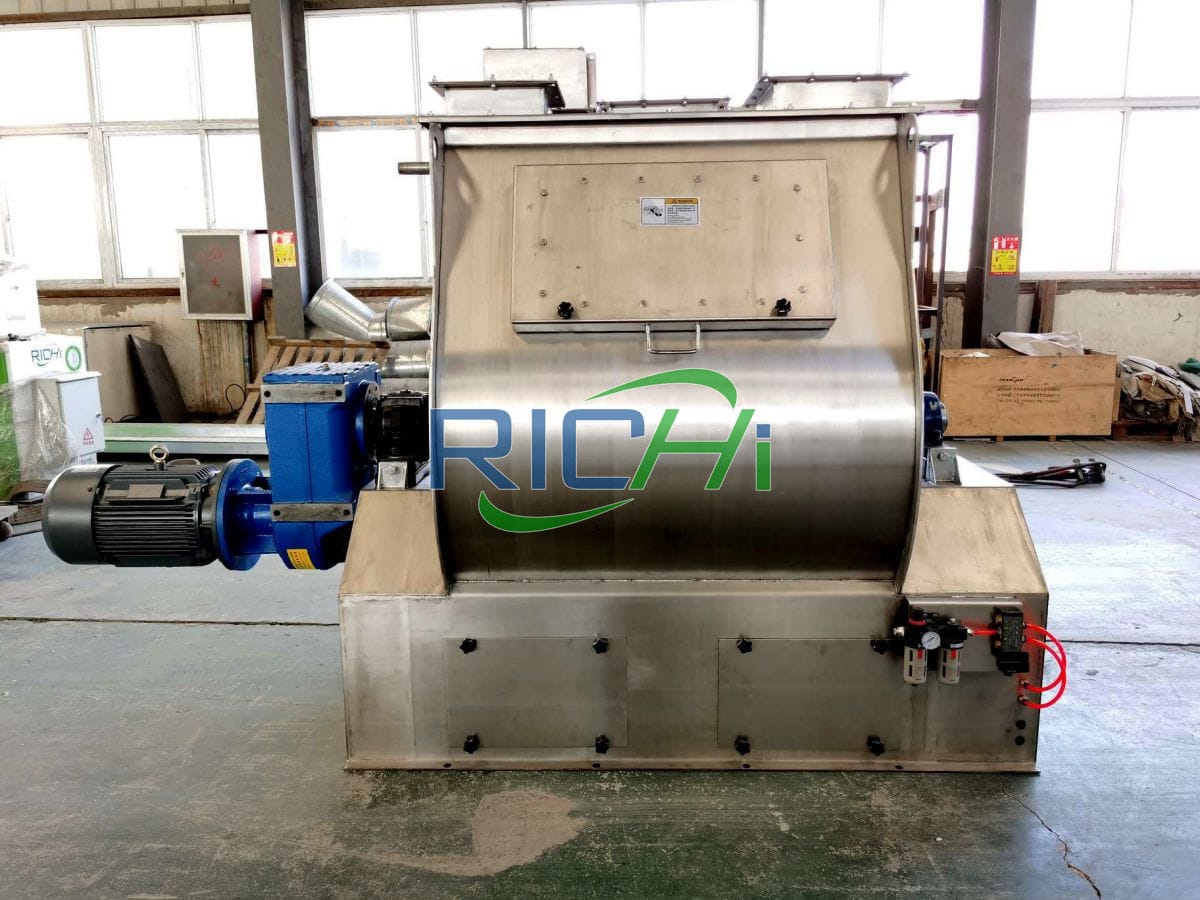
The mixer must not be emptied completely to avoid the spread of residues between batches. The cleaning efficiency of different mixers is different.
Physical methods such as compressed air, brushes or carrier (such as rice husk powder) flushing are used to clean the entire system between batches to reduce cross-contamination between batches.
Proper arrangement of mixed batches can greatly reduce cross-contamination between different batches.
When making premixes, because some batches of drugs or compounds are toxic to certain animals, there must be an interval between batches, so a proper mixing sequence is needed.
After the medicated premix is mixed, the feed of animals that are about to be put on the market or that are sensitive to the above-mentioned drugs (which are not allowed to be added and/or are toxic and harmful to some animals) should not be processed immediately.
All pharmaceutical-containing mixes should have a mixing sequence, despite proper cleaning, because there may be residues of highly potent drugs or ingredients and compounds that may be harmful to animals fed to the next batch of mixed feed.
Manufacturers of premixes should strictly follow this batch sequence.

How to choose the mixed packaging process?
In premix production, the mixing process and the packaging process are inseparable. There are two methods of mixing and packaging processes used in large-scale premixed feed plants:
- One is to package directly after mixing without conveying;
- The other is to mix it and then transport it horizontally or vertically into the finished product warehouse for packaging.
(1) Pack directly after mixing
The process of packaging directly without conveying after premix mixer machine is simple and clear, and there is no accumulation of materials in conveying equipment, which greatly reduces cross-contamination when changing varieties, and at the same time minimizes the possibility of re-classification of mixed premixes.
However, this process can generally only be equipped with 1 to 2 balers. The production capacity is greatly affected by the baling speed of the baler.
When changing varieties, the materials in the hopper must be packaged, which requires a certain waiting time.
At the same time, the packaging work must be done in the workshop. It is carried out inside, which will have a greater impact on the on-site air environment.
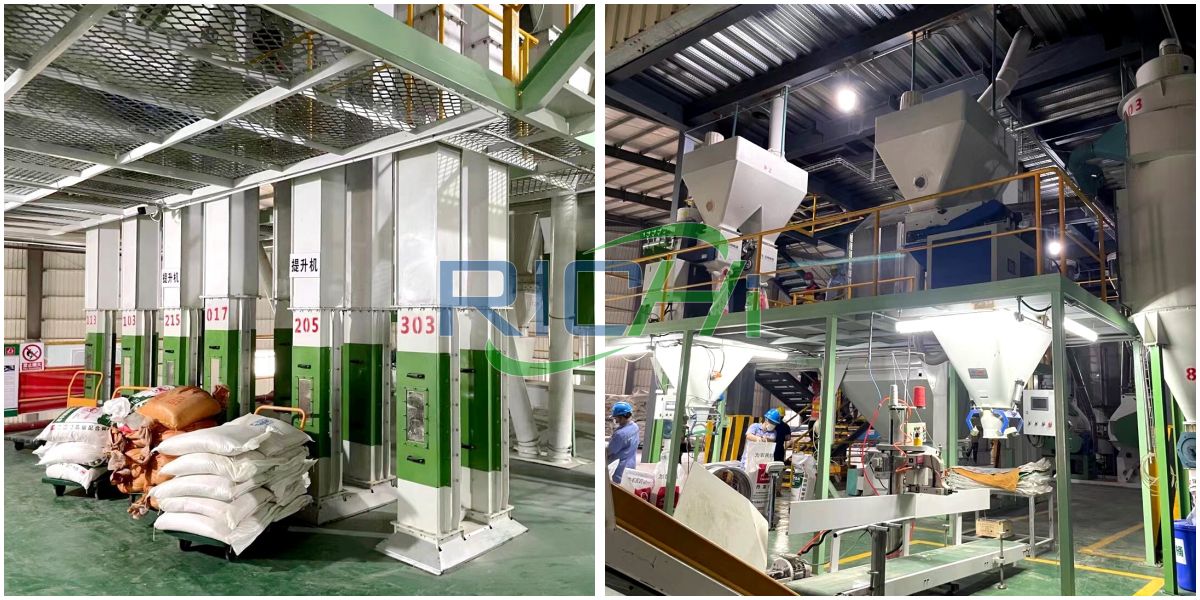
(2) After mixing, transport to finished product warehouse and then package
After mixing, the process is flexible and transported to the finished product warehouse for packaging. The packaging can be set up in a special packaging room.
Several finished product warehouses and balers can be equipped as needed, which can give full play to the production capacity of the ingredient premix mixer machine system. Changing varieties will not affect the normal operation of the workshop.
However, this process inevitably causes material accumulation in the conveying equipment, which easily causes cross-contamination between different varieties, and also easily causes the mixed premix to be re-classified.
Therefore, the process is complex, the investment is large, and it has high requirements for conveying equipment, such as the use of self-cleaning scraper conveyors, elevators, or high-concentration pneumatic pressure conveying.
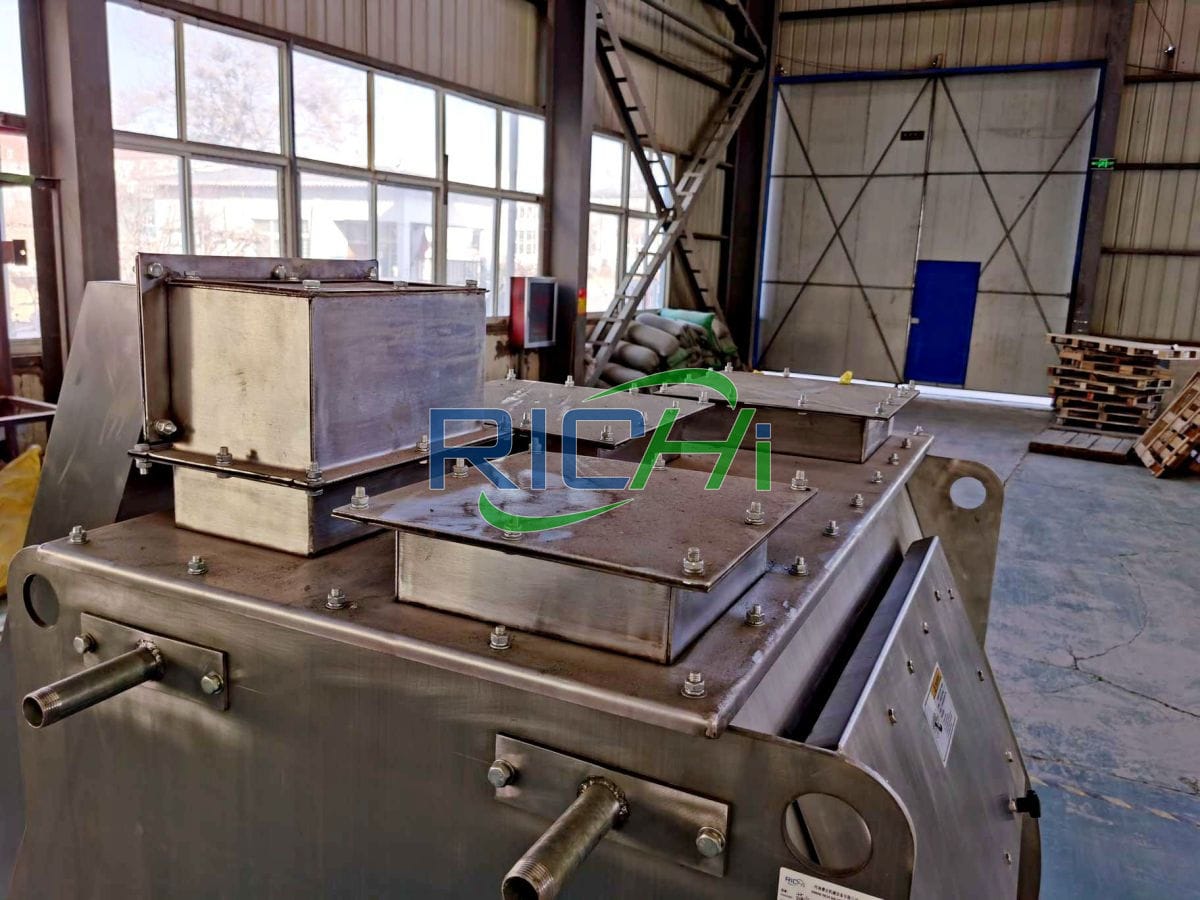
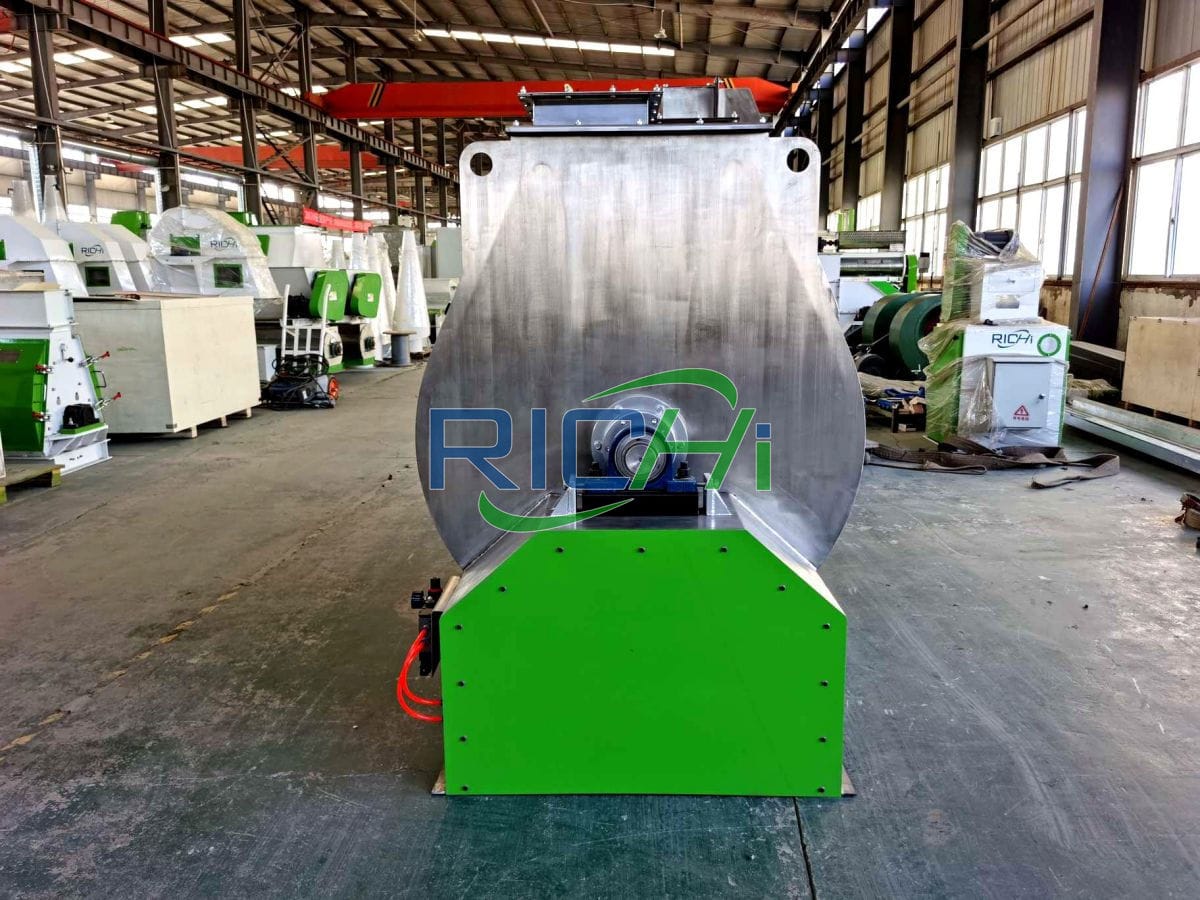
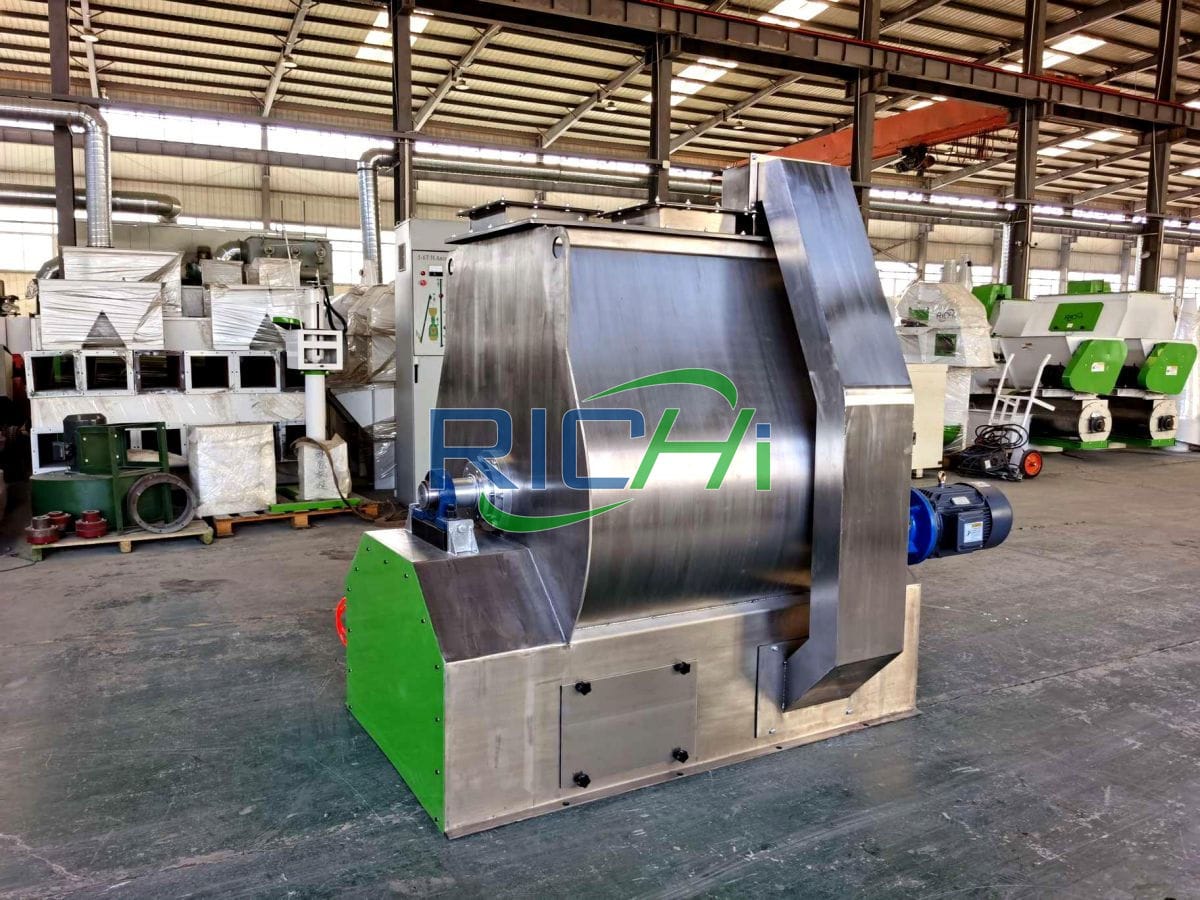
Classification of mixed premixes is a taboo in premix processing. In addition to classification requirements, medicated premixes also have stricter requirements for non-contamination.
Therefore, transportation of finished premixes should be avoided to prevent re-classification and cross-contamination, especially for high-concentration trace ingredients or premixed feeds containing drugs, the direct packaging process after mixing should be resolutely adopted.
For premixed feeds that are not highly concentrated or do not contain drugs, the process of conveying and then packaging can also be considered based on the raw material conditions, equipment performance, production varieties, worker operating levels, and factory conditions, but the conveying equipment must meet special requirements.